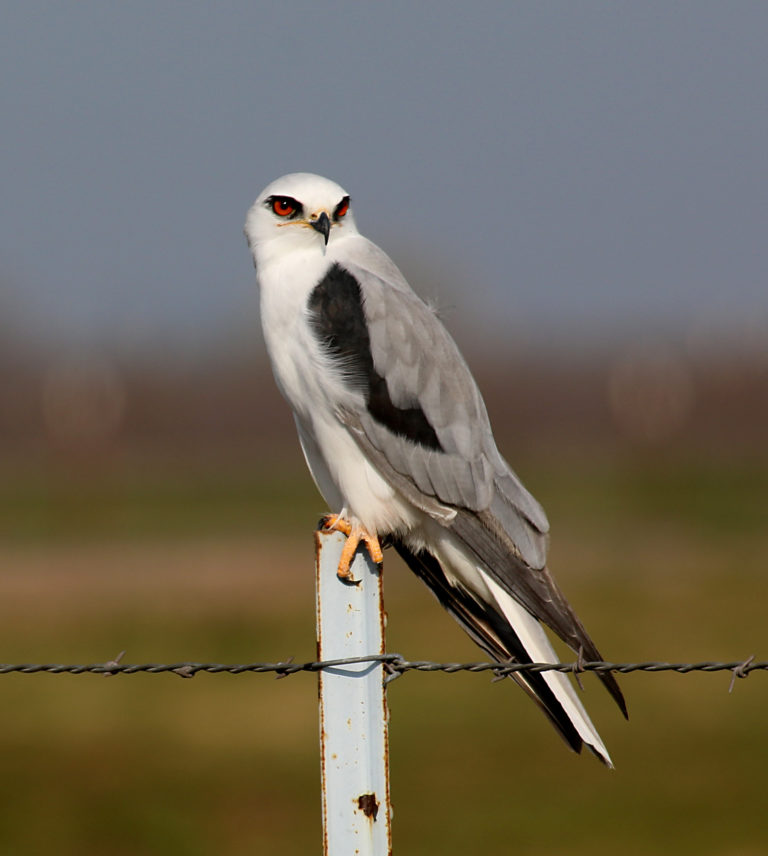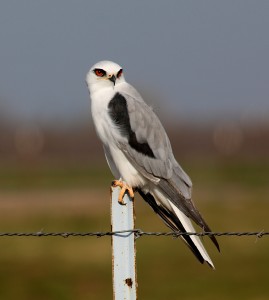

In his classic Birds of the Pacific States, Ralph Hoffmann laments the decline of the White-tailed Kite:
“The softness of its coloring and the confiding and gentle nature of the White-tailed Kite, so different from the wildness of most birds of prey, make a strong appeal to lovers of nature, but not alas! to the usual run of gunners.”
First published in 1927, Hoffmann’s book was reprinted for at least the next thirty years. At one time, he estimated that fewer than fifty pairs of White-tailed Kites remained in the entire state of California.
But in an unusual success story, Kite numbers began a study ascent in the 1960s as laws against shooting raptors and educational programs provided increased protection and appreciation for all birds of prey.
Today, “gunners” are no longer a problem. Nonetheless, White-tailed Kite numbers in the San Joaquin Valley are again threatened, not by wanton shooting but by an almost exponential expansion of almond orchards.
Kites, like most birds of prey, require open space for foraging. At one time, the great Central Valley offered vast expanses of open space, and even today it is the single most important wintering area for raptors in North America.
Nonetheless, raptor habitat is shrinking rapidly in the Valley. To the north, residential development continues covering land in the Sacramento Valley. Here in the San Joaquin Valley, vast expanses of rangeland are converted to orchards on an almost daily basis. The result is a devastating loss of habitat for all raptors. The effect is especially noticeable on year-round residents like White-tailed Kites.
One study found that California’s three largest areas of rangeland—the Central Coast, Sacramento Valley, and San Joaquin Valley—lost 20,000 acres of rangeland each year between 1984 and 2008.
But that figure is dwarfed by recent conversions of rangeland to orchards. In Stanislaus County alone, over 30,000 acres of rangeland have been converted to permanent crops in the last decade or so, mostly in the county’s eastern foothills.
Rangeland conversions not only diminish wildlife habitat, they have a host of other ill effects. Among the worst is an accelerated release of carbon dioxide into the atmosphere. Whereas rangeland serves as a carbon sink, conversions of rangeland release carbon dioxide and contribute to global warming.
Most rangeland conversions in the San Joaquin Valley have also resulted in unsustainable consumption of groundwater. The effects on rivers, streams, and vernal pools have yet to be calculated, but are certain to be devastating, and not just to wildlife.
One of the enduring lessons of nature is that animals and birds are often the first indicators of danger in the environment. Those who’ve delighted in watching White-tailed Kites forage in the open spaces of the Great Valley are right to think something is amiss when Kites begin disappearing from the landscape.
Will the gentle Kite survive? If it does, it will be because people today will relearn a fundamental lesson of the past: When we help our fellow creatures, we help ourselves.